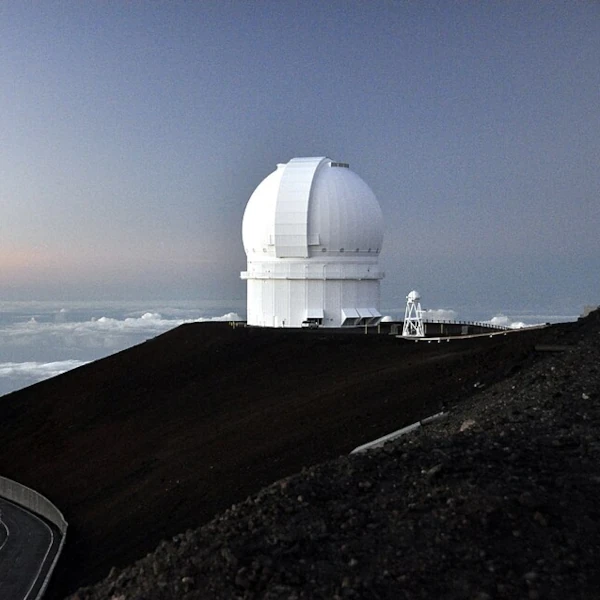Last updated: June 27, 2015
Mauna Kea Under the Stars: The CFHT Telescope in Pursuit of the Universe's Mysteries
An international telescope at the summit of the Pacific
The Canada-France-Hawaii Telescope (CFHT), operational since 1979, is a 3.6-meter diameter astronomical instrument located at an altitude of 4204 meters on the Mauna Kea volcano in Hawaii. The result of a collaboration between Canada, France, and the University of Hawaii, it embodies an example of international scientific cooperation in astronomy. The choice of Mauna Kea is not random: its atmospheric conditions—stability, low humidity, absence of light pollution—make it one of the best astronomical observation sites in the world.
Optical technology and cutting-edge instruments
Equipped with a 3.6-meter hyperbolic primary mirror, the CFHT was one of the first telescopes to fully exploit the technique of active optics, ensuring the stability of its surface to within a few tens of nanometers. Thanks to a thermally very stable dome and a compact structure, it significantly reduces internal turbulence. It is equipped with several cutting-edge instruments, including:
- ESPADONS: a spectropolarimeter for the study of stellar magnetic fields;
- WIRCam: a wide-field infrared camera, ideal for the study of distant galaxies;
- MegaCam: a 340 million pixel optical camera covering a field of one square degree, used for cosmological surveys such as the CFHTLS (CFHT Legacy Survey).
A central role in cosmology and astrophysics
The CFHT has played a fundamental role in several key areas:
- the mapping of dark matter through weak gravitational lensing effects;
- the detection of exoplanets by transit or microlensing;
- the search for distant supernovae, contributing to the study of the acceleration of cosmic expansion;
- the stellar formation in galactic nurseries such as Orion or Taurus.
A respectful astronomical sentinel
The operation of the CFHT takes place in a sensitive cultural and environmental context. Mauna Kea is a sacred site for Hawaiians, and strict protocols aim to minimize the impact of scientific infrastructure on the ecosystem and local traditions. The CFHT is thus part of an approach of respectful science, attentive to the human and natural dimensions of its environment.
Major discoveries made thanks to the CFHT
For over four decades, the CFHT has contributed to major scientific breakthroughs in astronomy.
- Mapping of dark matter: the CFHTLS (long-term observation program, conducted between 2003 and 2009) allowed mapping the distribution of dark matter on a large scale thanks to weak gravitational lenses, validating the ΛCDM (Lambda-Cold Dark Matter) cosmological model.
- Discovery of exoplanets: the Planet CFHT project allowed the detection of numerous exoplanets, notably by the transit method and radial velocity. The ESPaDOnS spectropolarimeter also played a key role in the characterization of planetary atmospheres and stellar magnetic fields.
- High redshift galaxies: with WIRCam and MegaCam, the CFHT detected distant galaxies whose light was emitted about 12.8 billion years in the past (z > 6), providing crucial information on the epoch of reionization of the universe.
- Study of supernovae: the SNLS (Supernova Legacy Survey) program, conducted with MegaCam, identified hundreds of type Ia supernovae, used as standard candles to measure the accelerated expansion of the universe, confirming the existence of dark energy.
- Small bodies of the Solar System: the CFHT identified many trans-Neptunian objects (TNOs), notably in the Kuiper belt, revealing the dynamic complexity of the outer regions of the Solar System.
Thanks to the stability of its instruments, its exceptional sky, and the longevity of its observation programs, the CFHT remains one of the most prolific telescopes in the fields of cosmology, stellar physics, and planetary formation.
Towards a new generation of observations
Scheduled for conversion in the coming years, the CFHT is expected to evolve into the MSE (Maunakea Spectroscopic Explorer) project: an 11-meter spectroscopic telescope dedicated to the study of the large structures of the universe. This transition, supported by the international scientific community, will make it possible to take advantage of the existing infrastructure while pushing the limits of multi-object spectroscopy.
